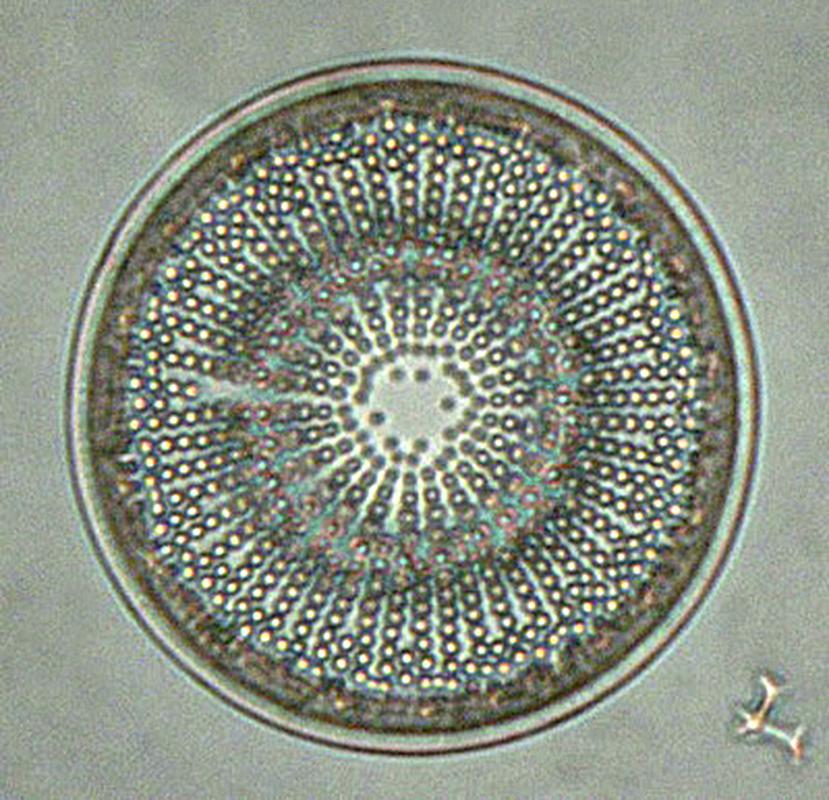Tiny marine planktonic diatoms are responsible for removing a quarter of the carbon dioxide from the atmosphere. A new study led by Museum scientists suggests that global warming itself could cause many diatom species to go extinct, reducing ocean carbon removal and further enhancing global warming. They examined fossil diatom diversity and found up to 30% fewer species in past climates only moderately warmer than today's - climates well within the range of future warming forecasts. What can't be determined is if extinctions would happen in decades or only after thousands of years: for this much more research is needed.
Microscopic, single celled plants called diatoms are common in the ocean phytoplankton. As they grow, they capture carbon dioxide, the primary gas causing global warming, from the atmosphere. Many diatom cells sink into the deep ocean after dying. This causes almost a quarter of the planet's annual removal of carbon dioxide. Diatoms prefer cold water, and there has been concern that diatoms could be less common in the future, as global warming also warms ocean waters. Other types of phytoplankton would replace them, but these are less effective in removing carbon, or even add carbon to the atmosphere. Fewer diatoms would thus reduce the ability of the ocean to remove carbon dioxide from the earth's atmosphere. Until now, it has been assumed that at least all diatom species would survive in warmer oceans, and thus be available to help remove carbon dioxide. A new study led by Museum scientists suggest that this may not be true. After carefully analysing the fossil record of diatoms, they have found that their diversity is highly correlated to the cold climates that developed only relatively recently in the geologic past. Many fewer species of diatoms existed for example in the middle Miocene, when atmospheric carbon dioxide levels were only moderately higher than today, yet still lower than those projected for future global warming. If these older climate conditions are a fair representation of our future planet, many diatom species alive today could become extinct, particularly cold water forms which today are the species most important to transferring carbon into the deep ocean. This would reduce the ability of the oceans to remove carbon even more than now expected. However, without knowing the precise reasons for lower diversity in past times, it is not possible to be sure that species of diatoms would become extinct - and if so, rapidly enough to be of concern - due to future global warming. Only more research will be able to resolve this important question.
Publication:
Lazarus, D., Barron, J., Renaudie, J., Diver, P. and Türke, A. 2014. Cenozoic planktonic marine diatom diversity and correlation to climate change. PLOS One
contact and pictures: gesine.steiner@mfn-berlin.de
